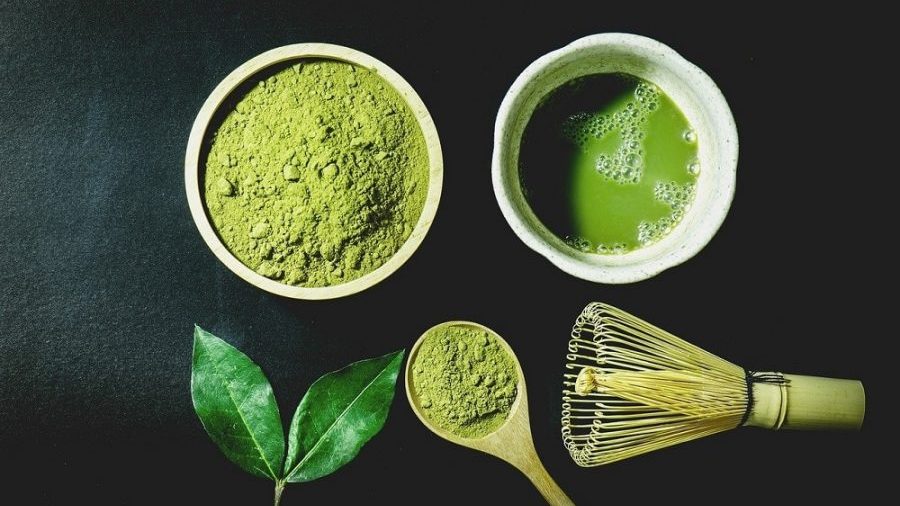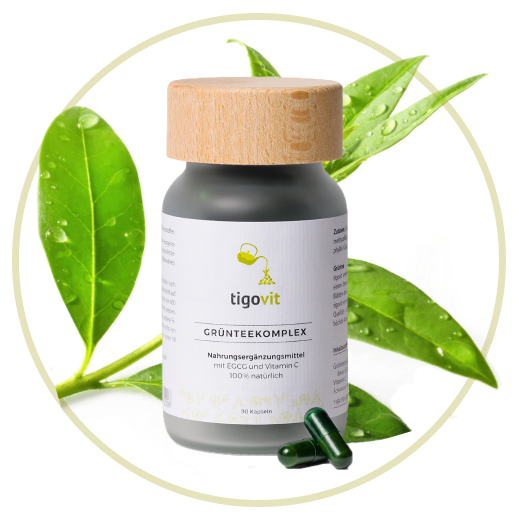
Most people already know the beneficial properties of green tea. Either as Food supplements or as a classic hot or cold drink, with a history spanning thousands of years across several cultures. But what do you really know about the rest of the green tea family? Especially about its famous relatives Matcha and Sencha?
To see the difference, we first have to look at the similarities.
Matcha and Sencha both come from the same plant called "Camellia Sinensis"and are both green teas. And they have something else in common, because both are non-fermented teas. As we already know green tea "born" in China, but its varieties - matcha and sencha - originated in Japan and developed into traditional drinks.
Since ancient times, the use of ceremonial tea a big part of Japanese culture and both types of tea play a big role in Japanese tradition. As fermentation often reduces the nutritional value of the tea, non-fermented teas such as Sencha and Matcha have a very high nutritional value.
What is Sencha?
The name Sencha comes from the Japanese word "Senta", which means "roasted tea".
Sencha tea is grown in the sun, which contributes to many of its nutritional properties. It is rich in Polyphenols, including Catechinswhich could help to prevent heart disease and act as a Antioxidants work. Sencha not only has a special nutrient content that matcha does not have, but it is also prepared differently.
Sencha is made by steeping whole tea leaves in water and then removing them before drinking. It is also known to have a refreshing, slightly spicy aftertaste.
Sencha tea is the most commonly consumed green tea in Japan. It is so popular that you will find it in most restaurants in the country. This tea is only made from the youngest leaves of the tea plant.
The leaves of the Sencha tea are picked and then steamed to prevent oxidation. After the leaves are steamed, they are rolled by hand into different shapes.
Sencha tea is praised for its flavourful balance of acidity and sweetness and is characterised by a slightly spicy taste with a mild note. It has a sweet, grassy aroma and nuances of pine or melon. The highest quality teas offer a more complex flavour profile that has a contrasting yet balanced taste.
There are two main types of Sencha green teas, classified according to the steaming methods: Asamushi and Fukamushi.
- Asamushi tea is considered the traditional variety and is prepared by steaming (30 to 60 seconds). It has a light yellow colour and a strong, sweet taste when prepared.
- Fukmushi tea is a relatively new variety and its leaves are steamed for longer. This produces a Sencha tea that is darker and cloudier compared to traditional Asamushis. Fukamushi Sencha also presents with a stronger flavour that tends to be more earthy.
Some varieties of Sencha tea that are important to mention:
- Shincha - also known as Ichiban-cha or New Tea, is a sencha tea harvested in spring. It tends to have a sweeter, milder and sometimes richer, umami (pleasant taste) filled nuance than other sencha varieties. It has a light, golden-green colour, which means that this tea variety has a delicate flavour and aroma.
Japan's tea regions have a mild winter, but the tea plants stop growing during the winter period. In April, when the first delicate green leaves begin to bloom, they are harvested to produce a more "synthetic" variety.
- Sencha powder tea- You should not confuse it with matcha tea.
Although the powdered varieties of matcha and sencha may seem similar, the main difference is in their colour and taste. Matcha powder retains its bright green colour and is a sweeter tea than Sencha, which has a more bitter taste and a dark green or brown colouring. Like loose Sencha, the powder has an astringent and somewhat grassy taste. It is perfect for cooking and baking cakes, biscuits, lattes and more!
Conclusions on Sencha tea:
- is easy to prepare.
- has both a refreshingly mild (Shincha) and a rather bitter taste (Sencha powder).
- has a high nutritional value.
- it has antioxidant properties (but less than matcha).
What is Matcha?
The word matcha means "powdered tea".
Matcha tea has enjoyed increasing popularity worldwide in recent years and is often referred to as a mood-enhancing food. Previous research has shown that three ingredients contained in matcha tea, L-theanine, Epigallocatechin gallate (EGCG) and caffeine, can affect mood and cognitive performance.
Unlike Sencha tea, Matcha is grown in the shade and is therefore nutritionally different from Sencha. It is known for its ability to energise and calm at the same time. This is due to the caffeine and L-theanine.
Obviously, the caffeine gives a lot of energy, while L-theanine is an amino acid that has a calming effect without causing drowsiness. The end result: matcha makes you awake without making you nervous - a perfect combination.
How is matcha prepared?
At Matcha the tea leaves are ground and mixed with water. This way you actually consume the whole tea leaf.
Japanese Tea Ceremony for the Home
Green tea, in any of its forms, is one of the best teas (if not the best) we can prepare for ourselves. Matcha green tea also offers numerous benefits. As some studies show, it has an effect on free radicals in the body, which means it can improve our overall well-being.
It could increase the psychophysical energy, help you maintain a stable body weight and pH balance and detoxify the organism. And best of all - it is an alternative to coffee, without the unpleasant feeling of nervousness.
What is the difference between "normal" green tea and matcha tea?
Matcha is a type of green tea originally from Japan, which is available here in the form of ground powder from green tea leaves. Matcha powder is considered one of the healthiest green teas on the market. It provides vitamins, minerals, antioxidants and amino acids. These are absorbed by our bodies when the whole tea leaf is consumed, rather than simply infusing the leaves and removing them to drink.
There are two basic types of matcha tea:
- Usucha - made from the leaves of a plant younger than 30 years.
- Koicha - made from the leaves of a plant that is more than 30 years old. Koicha is made with less water in the tea ceremony and has a sweeter taste. Koicha is more valuable and more expensive than Usuche.
There is only one rule for the preparation and that is not to use boiling water. Normally, two items are needed for the preparation: a matcha bowl and a bamboo whisk.
- Boil the water to 60° C - 80° C (it is important that the water is hot but not boiling).
- Put 1 - 2 grams of powder in a matcha bowl.
- Stir the tea until a firm foam forms. Remember that a firmer froth enhances the end result and increases the overall flavour. If you don't have a bamboo whisk, you can always use a classic whisk.
Conclusions on matcha tea:
- It has a sweeter taste (koicha).
- It has antioxidant properties.
- Matcha helps us stay focused and energetic without a jittery feeling.
- It has a calming effect without causing drowsiness.
- It can act as an immunity booster.
Sencha or Matcha - who wins?
If you didn't know the difference between Sencha and Matcha, or even that they both existed, now is a great time to try them both! But before you are spoilt for choice as to which you should try first, here are a few facts comparing these two wonderful drinks.
- Antioxidant properties: Matcha tea contains more antioxidants than Sencha.
- Caffeine content: Matcha is the winner here. Due to its growing methods, matcha retains more of its caffeine content as it grows in shady conditions. So if you want to reduce your caffeine intake, Sencha would be the better choice.
- Nutritional values: Both types of green tea offer some health benefits, but the nutritional value varies between the teas. Sencha tea, compared to matcha, contains a greater amount of Vitamin C and Vitamin E. However, matcha tea provides more Vitamin B6 and Beta-carotene.
One thing is certain: green tea remains one of the most popular drinks in the world. And if you haven't already, we recommend you try green tea in any of its forms. But remember: if you're looking for a light and refreshing drink, go for Sencha. It's also perfect for a cup of iced tea.
And if you need some energy, matcha is a great option. Both Sencha and Matcha have some amazing benefits that you shouldn't miss out on. But in the end, it's up to you which you prefer.
"Medicus curat, natura sanat." - The doctor helps, nature heals. (Latin proverb)
Photo credits:
Image by dungthuyvunguyen on Pixabay
Image by pictavio on Pixabay





